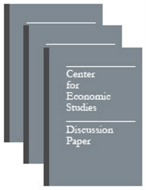Migration and Dispersal of Hispanic and Asian Groups: An Analysis of the 2006-2008 Multiyear American Community Survey
Migration and Dispersal of Hispanic and Asian Groups: An Analysis of the 2006-2008 Multiyear American Community Survey
Abstract
This report seeks to evaluate selective migration processes of Hispanic and Asian nationality groups in the US from established settlement areas, using recent migration data from the American Community Survey. The underlying goal is to detect migration tendencies leading toward an increased dispersion of these groups associated with their migration processes. Using descriptive statistics, maps, and migration models, we assess how migration processes in the 2006-8 period are leading to the dispersal of Hispanic and Asian race ethnic groups across metropolitan areas, with special attention to the roles of co-ethnic communities and spatial assimilation. These analyses employ migration data available from the 3-year 2006-8 American Community Survey using restricted data from the US Census Bureau’s Research Data Centers. This use of the restricted ACS files permitted the first post 2000 analysis of inter-metropolitan migration for Hispanic groups (Mexicans, Puerto Ricans, Cubans, Salvadorans, Dominicans) and Asian groups (Chinese, Indians, Filipinos, Vietnamese, Koreans) using the detailed demographic and geographic attributes available with these files. The data and analysis presented here provide a benchmark for further research of this kind with the American Community Survey in light of the fact that migration data will no longer be available from the US decennial census. The study examines migration from these groups’ major settlement areas to other metropolitan area destinations as they are affected by the attraction of co-ethnic communities and by a migrant selectivity pattern consistent with the perspective of spatial assimilation. The migration processes themselves were evaluated in terms of two components: the out--migration rates of residents, and the destination selection of movers. From the perspective of co-ethnic community attraction, it was hypothesized that the outmigration rates from high co-ethnic settlement areas would be lower than those from areas where the group had a smaller overall presence and that the destination selections of out-migrants would be positively affected by the presence of high co-ethnic population shares in destination areas. From the spatial assimilation perspective, it was hypothesized that out-migration from high coethnic areas would least likely occur for group members with lowest education, poor facility with English, and recently arrived in the US; whereas the selection of destinations with large coethnic population shares would be most likely to occur for these same population categories. The results strongly confirm that co-ethnic community attraction continues to reduce outmigration of groups from major settlement origins and positively influences their destination selections. A series of multivariate migrant destination selection models confirm a consistent draw of ethnically similar destinations across individual Hispanic and Asian groups when other economic, demographic and structural metropolitan attributes are taken into account. In contrast, results regarding spatial assimilation are typically mixed or nonexistent in characterizing both out-migration and mover destination selectivity patterns. In fact, we find contrary evidence for some Asian groups for whom it is the most educated, and native born migrants who show a penchant for selecting destinations with greater co-ethnic population shares. Among the greatest destinations for Indians, for example, are Philadelphia, Seattle, Dallas, Boston and Atlanta- areas with higher than average Indian population shares, and areas that also house knowledge-based industries. The selection of co-ethnic destinations among Hispanic group migrants appears somewhat impervious to education attainment and Hispanic and Mexican group movers, who are foreign born and who arrived since 2000, are least, rather than most, prone to select co-ethnic destinations. The mover destination models make plain that employment growth at destination provides a strong draw for all Hispanic groups. This suggests that recent growth in low skilled jobs in parts of the country with small Hispanic populations are nonetheless attracting newly arrived, and less skilled Mexicans and other Hispanics who might have previously been especially lured to destinations with large co-ethnic population shares.






